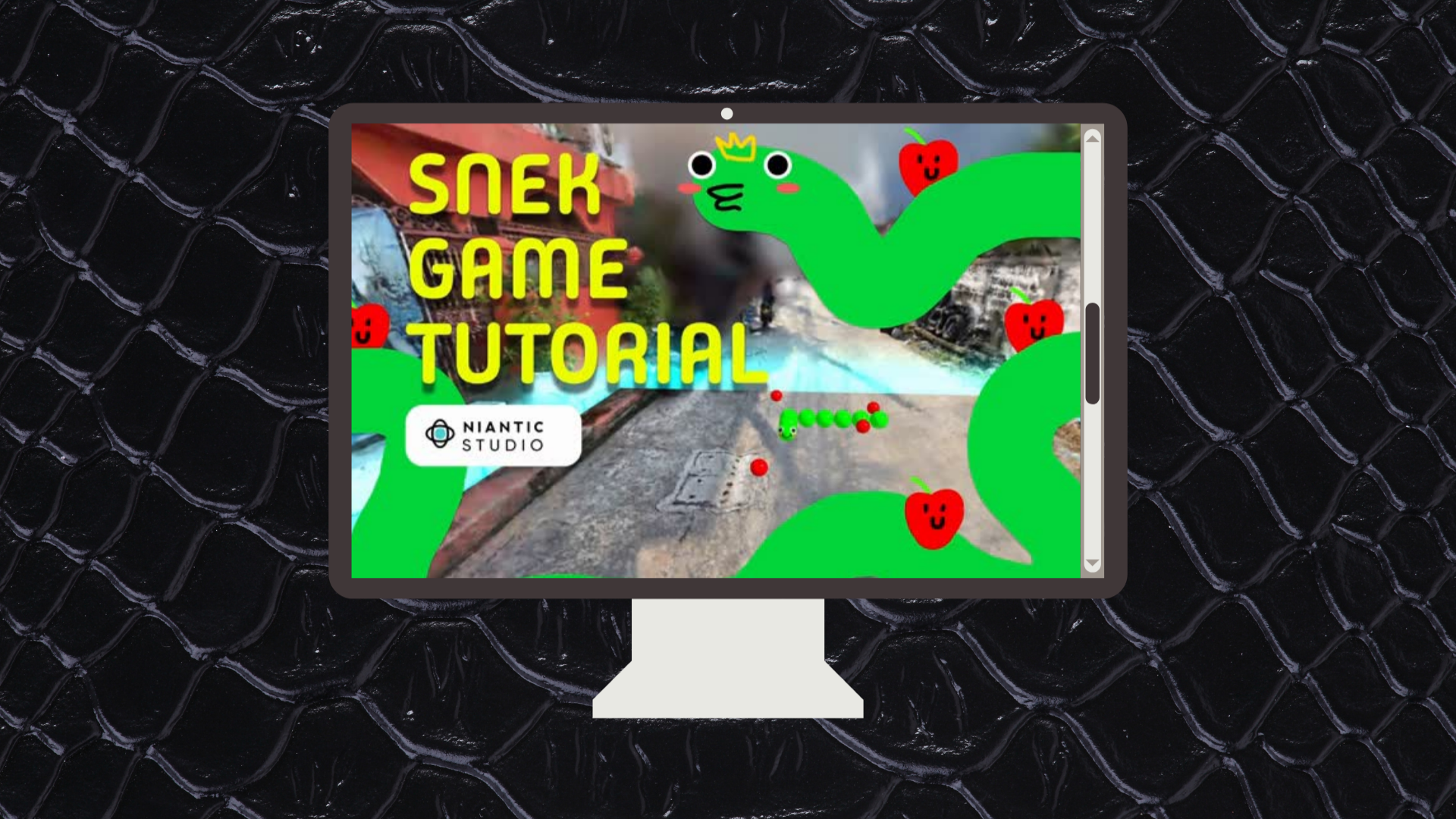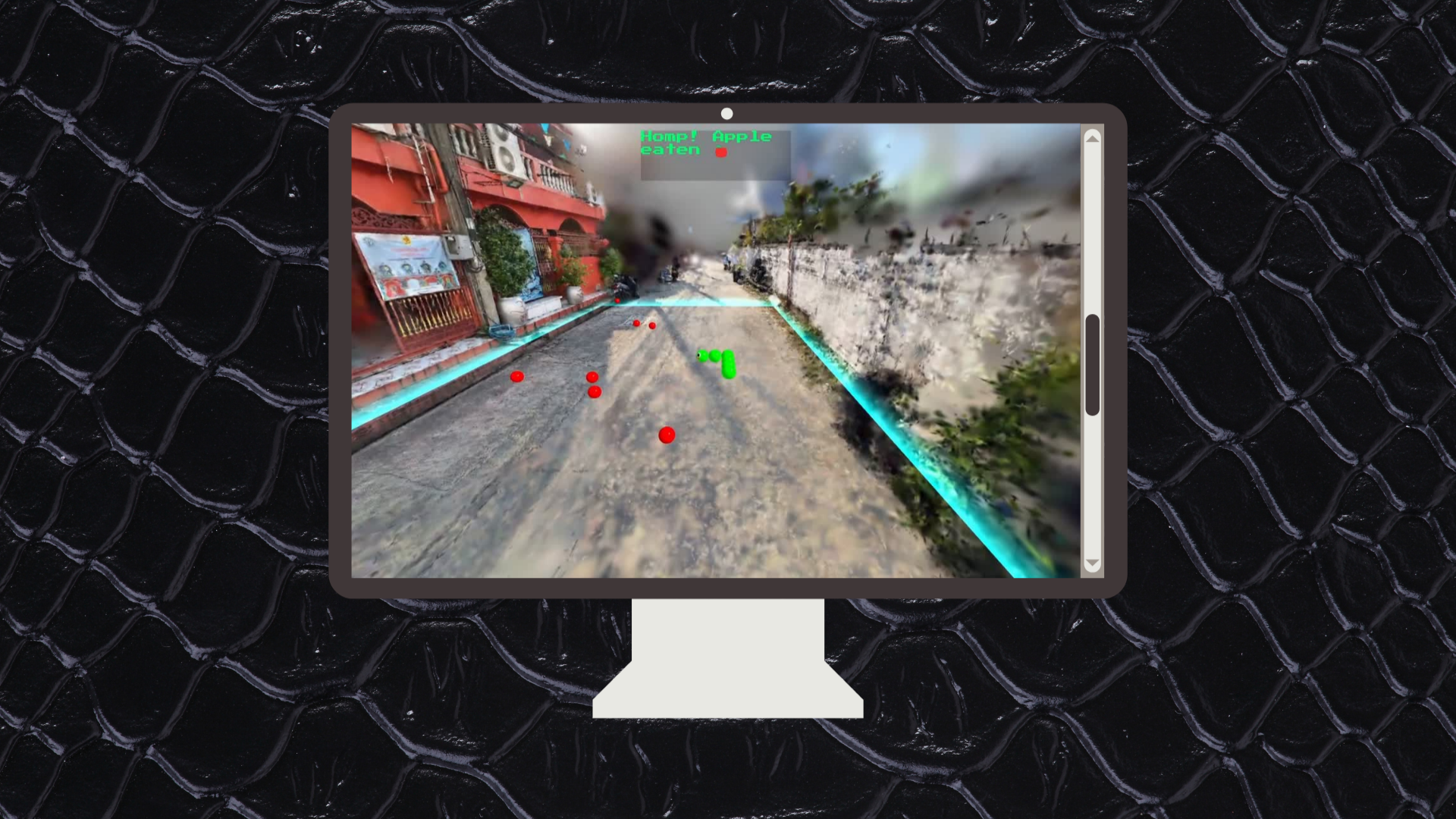8th Wall Blog
Behind the Build: Reimagining Classic Snake in Niantic Studio
How Vladimir Storm turned a nostalgic arcade game into an immersive WebAR experience

Vladimir Storm’s Snek Game is a modern twist on the classic snake game, rebuilt from the ground up using Niantic Studio. But this version isn’t just about chasing apples—it’s also a developer resource, offering a detailed codebase and tutorial to help others get hands-on with building 3D web games using ECS, Gaussian splats, and mobile-friendly inputs.
We caught up with Vladimir to learn what inspired him to build Snek Game, how Niantic Studio helped accelerate development, and why this is just the beginning for web-based gaming.

What inspired you to create Snek Game?
This project started as a way for me to dive deeper into web game engines and explore how Gaussian splatting could be used effectively on mobile devices. With 15 years of experience in computer graphics and XR, I was drawn to the potential of Niantic Studio to support performant 3D games directly in the browser. The classic snake game felt like the perfect balance—simple in gameplay, but powerful as a learning resource for other devs looking to explore AR and WebGL in a new engine.
How did Niantic Studio help bring your vision to life?
One of the most impressive things about Niantic Studio is that everything you need is built into one tool—a visual editor, source control, hosting, and real-time deployment. That all-in-one approach made development smooth and efficient.
However, the ability to use Gaussian splatting directly in the engine really sold me. With Scaniverse, you can create a scan and drop it into your project almost immediately. That’s huge. It’s the only toolchain I know of that makes that pipeline this simple.
Plus, the visual editor is genuinely intuitive, especially when paired with a flexible ECS API. Whether I was scripting custom components or organizing camera logic, it felt fast and modern.
What challenges did you face during development?
While Niantic Studio is still in beta, I was surprised at how stable and production-ready it felt. That said, data type limitations in component schemas required some creative problem-solving. I needed to store complex arrays and object structures, so I built a custom serialization system to handle things like Vector3 arrays and BigInt.
Also, I’d love to see more reusable modules in the future. Having a library of plug-and-play code snippets would help speed up early development. Even so, the developer forum and sample projects were incredibly helpful and well-supported.

What were your key steps in building this project?
- Plan the architecture first: I structured all logic around ECS, breaking it into modular components like CameraTopDown, ForceField, and Snake.
- Prototype fast: I started with placeholder assets to test functionality across platforms—mobile, desktop, and headset.
- Optimize before scaling: Once the core gameplay loop worked, I optimized the code and finalized my 3D assets.
What advice would you give other WebAR developers using Niantic Studio?
Try it. Especially if you’re curious about building cross-platform, mobile-first games or AR experiences. Niantic Studio is currently the best WebAR engine in terms of reach—it runs on iOS, Android, desktop, and even XR headsets.
Also:
- Use serialization for complex state handling
- Test frequently on real devices, not just the simulator
- Embrace modularity by writing reusable components from the start
Where do you see the future of AR—and Niantic Studio’s role in it?
The future is browser-based. Users don’t want to download apps, and brands want cross-platform experiences. WebAR solves both.
I also think Gaussian Splatting is the next big leap in real-time graphics. Combined with Niantic’s VPS system, Studio becomes a rare platform where you can scan a physical space, bring it into a game engine, and launch it to the world—all in the same workflow.
Niantic is heading in the right direction. I’m excited to build more.
I also think Gaussian Splatting is the next big leap in real-time graphics. Combined with Niantic’s VPS system, Studio becomes a rare platform where you can scan a physical space, bring it into a game engine, and launch it to the world—all in the same workflow.
Niantic is heading in the right direction. I’m excited to build more.
Explore the code
Want to build your own snake game—or just study the source? Check out Vladimir’s YouTube tutorial to dive deeper into components like CameraTopDown, Snake, and ForceField. Whether you're prototyping gameplay loops or experimenting with ECS systems, Snek Game is a great starting point.
.png)